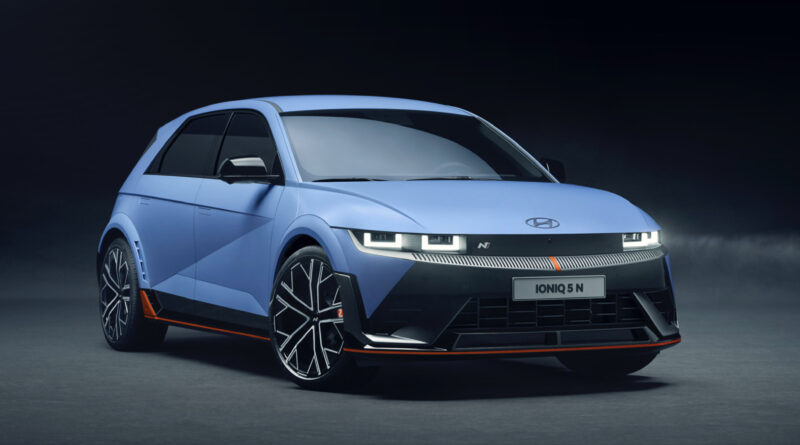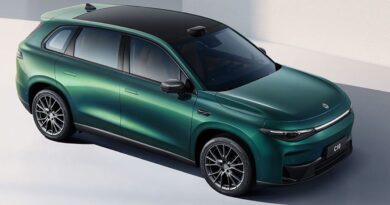Hyundai Ioniq 5 N promises to redefine fast electric cars with 478kW EV monster
The Hyundai Ioniq 5 N has a little bit of Fast & Furious and generous doses of a world championship rally car as part of its high tech pitch to redefine electric performance cars – and take the EV fight to the Tesla Model Y Performance and Kia EV6 GT.
The Hyundai Ioniq 5 N will be the most powerful car from the brand, with the dual-motor high-performance SUV thumping out 478kW – the same as a Porsche 911 Turbo S.
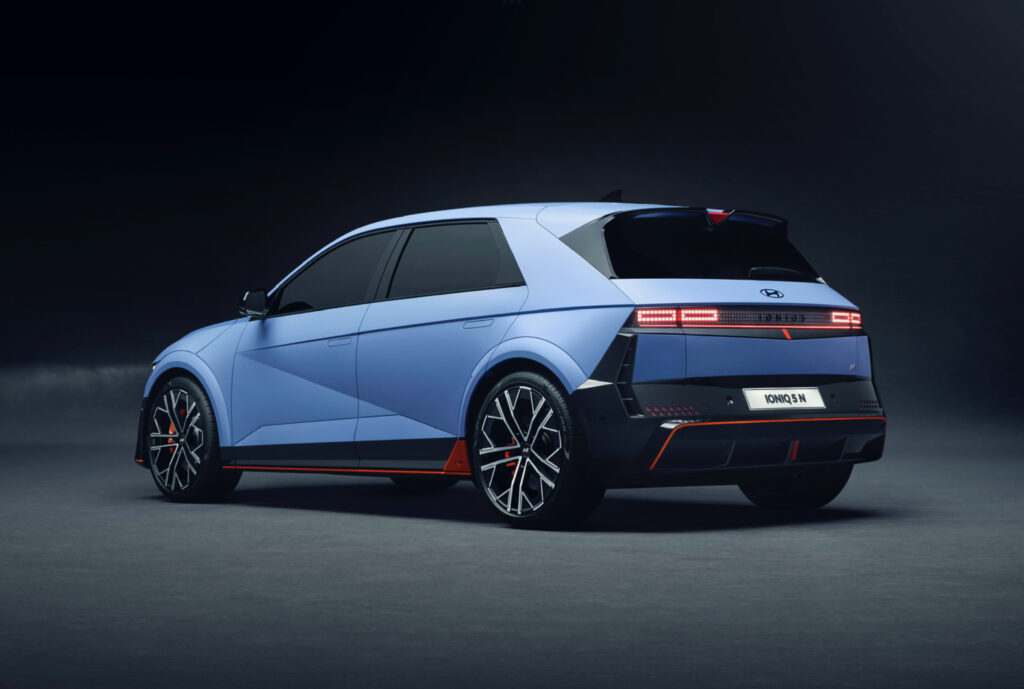
The fastest, most engaging electric car from Hyundai leverages advanced software and clever digital controls as well as hardware developed on race tracks and rally roads across the world.
The Ioniq 5 N can even mimic the snorts and bangs of a turbocharged race car or the howl of a fighter jet.
READ MORE: Tesla Model Y Performance vs Kia EV6 GT
READ MORE: Hyundai Ioniq 5 N driven. Is this the makings of an EV masterpiece?
Yep, the Ioniq 5 N promises to be an EV done very differently.
With features such as N Drift Optimizer, Torque Kick Drift, Drag Mode, N Race and N Grin Boost the Ioniq 5 N is a world away from the sensible and efficient electric cars that have spearheaded the EV revolution.
The Ioniq 5 N is all about appealing to car enthusiasts with a car that delivers on driving excitement, according to Hyundai.
“We put an enormous amount of energy and thinking developing the Ioniq 5 N,” says Till Wartenberg, vice president of Hyundai’s N brand and motorsport division.

“No shortcuts were taken.”
The director of vehicle development, Hyundai Motor Europe Technical Center Gmbh, Tyrone Johnson makes the bold claim that the Ioniq 5 N is “the first ever EV to truly dedicate itself to car enthusiasts”.
“Car enthusiasts are the last group to be electrified and to be fair their options were limited.”
At the core of the Hyundai Ioniq 5 N is a regular Ioniq 5 SUV.
But there have been significant changes to transform it into a performance powerhouse that tickles the senses as much as any petrol-powered go-fast machine.
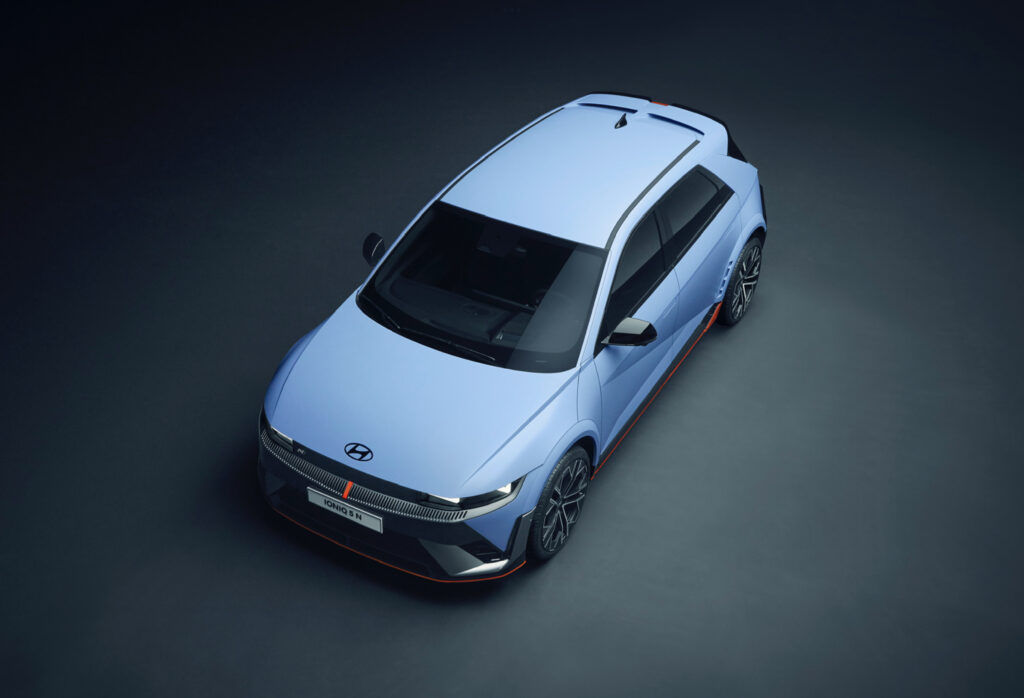
It’s starts with the design.
The Ioniq 5 N gets unique bumpers with more air intakes up front and active aerodynamics, something that assists with battery cooling and also helps the car achieve its 258km/h top speed.
There are also unique 21-inch wheels wrapped in Pirelli P Zero tyres.
As well as the N sub-brand’s available Performance Blue paint finish there’s a matte version of the same hue.
And Hyundai has added “Luminous Orange Matte” as the highlight colour to reinforce the N branding.
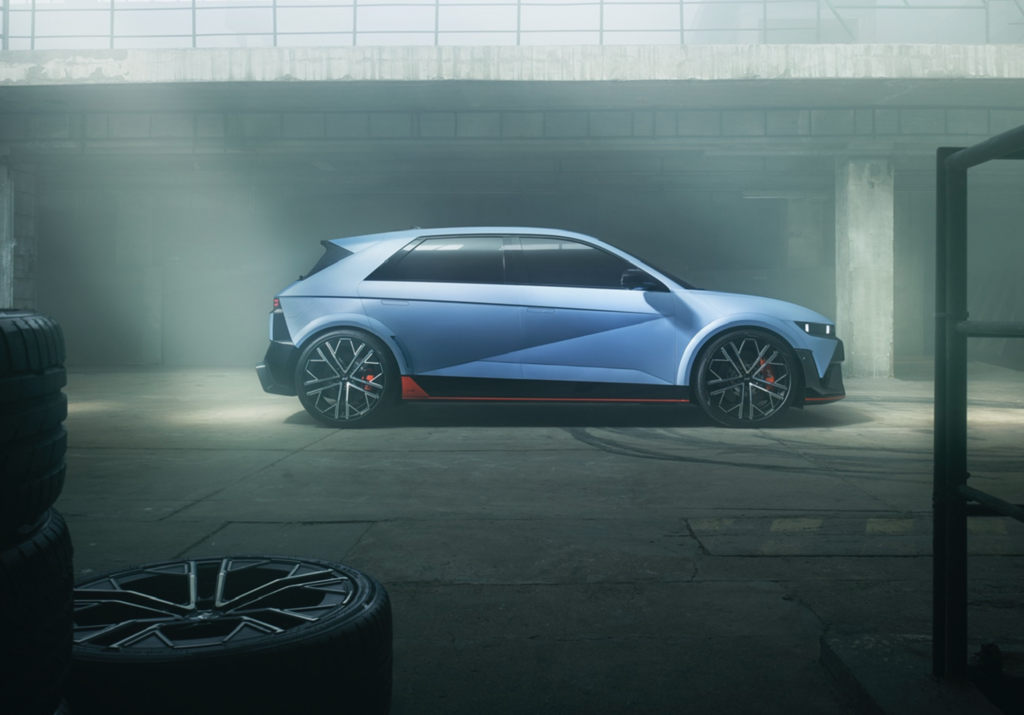
Inside are body-hugging sports seats and a redesigned centre console with padding, so drivers can brace their knee during ambitious cornering.
And while the spacious five-door body remains, it’s been heavily engineered to increase stiffness.
There’s also unique suspension geometry designed with the race track in mind and a new steering system.
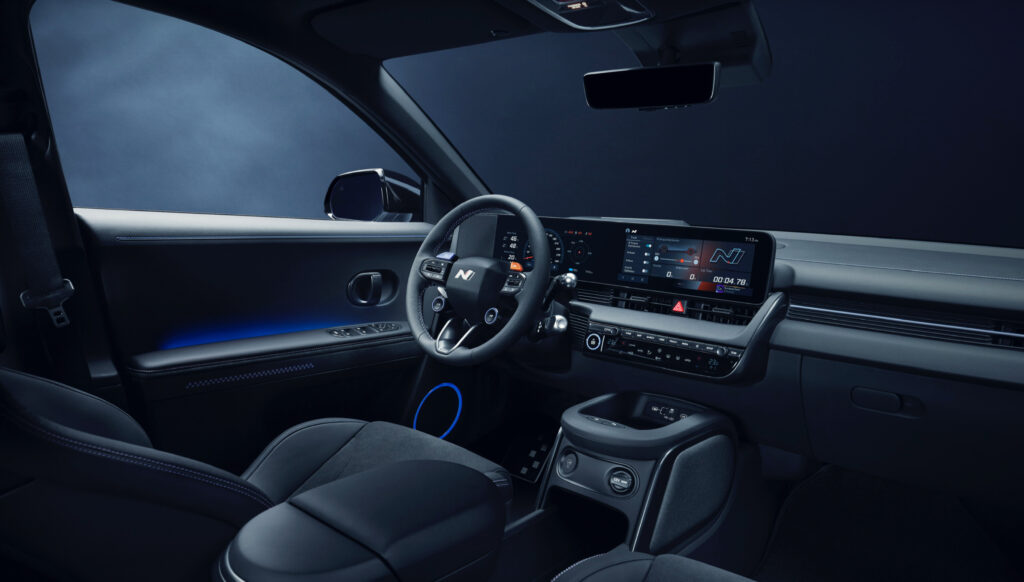
And Hyundai has developed new dampers “meaning the bandwidth of the suspension from Comfort to N mode is increased further”.
It’s all about creating a “corner rascal”, with Hyundai claiming dynamics were a prime focus for the Ioniq 5 N.
Not that it’s slow in a straight line.
At the heart of the Ioniq 5 N is a new 84kWh battery pack, larger than that used in regular Ioniq 5s.
There are two electric motors, which combined produce up to 478kW and 770Nm, enough to launch the lower-slung SUV to 100km/h in 3.4 seconds.
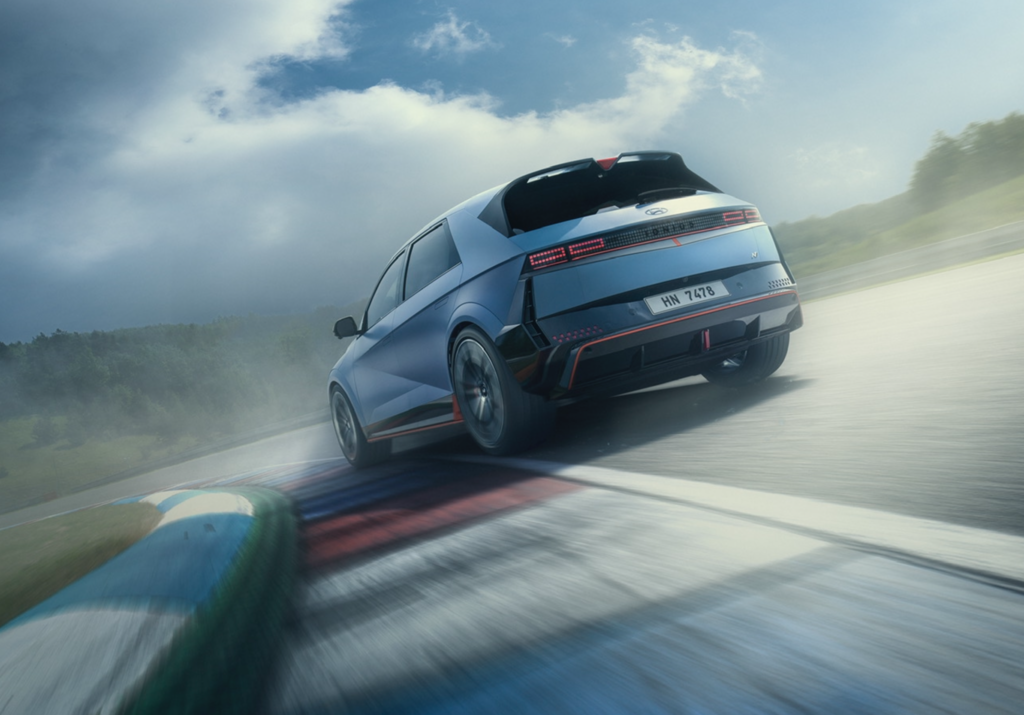
Torque delivery between the front and rear wheels can be adjusted between 11 different levels as part of the driver involvement that is at the I5 N’s heart.
There are also sounds to simulate an engine revving – complete with fake gear shifts that jolt when selected – to give the car a more traditional performance car flavour.
Mock engine sounds can mimic a world rally car, complete with snorts and bangs. They not only utilise the eight-speaker Bose sound system inside but also two external speakers so the outside world can get a sense of the excitement.
If you want something a little more futuristic, then Hyundai N has you covered, even creating a sound designed to mimic a twin engine fighter jet.
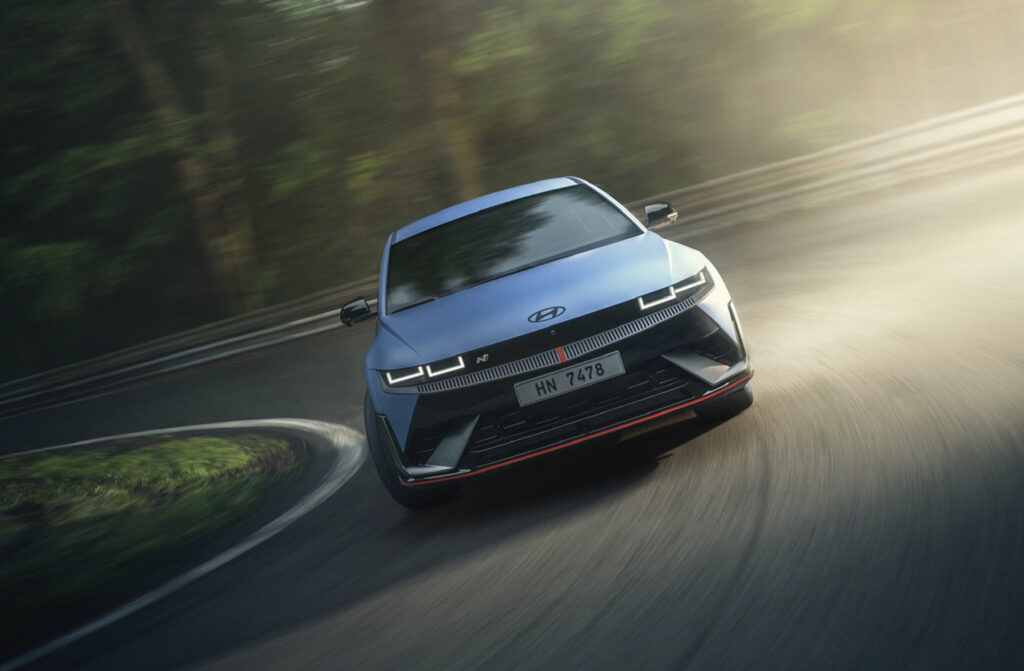
There’s also an electronic limited slip differential on the more powerful rear motor to control torque delivery between the two back wheels.
Hyundai has also developed a range of electronic controls to maximise fun factor when driving the car on a track.
N Drift Optimizer can hold the car in a controlled drift while Torque Kick Drift simulates an aggressive dumping of the clutch to kick the rear wheels out for starting a drift.
There’s also N Grin Boost that maximises output from the two electric motors for up to 10 seconds. It’s about harnessing the full 478kW/770Nm instantly (in regular driving modes it makes 448kW/740Nm).
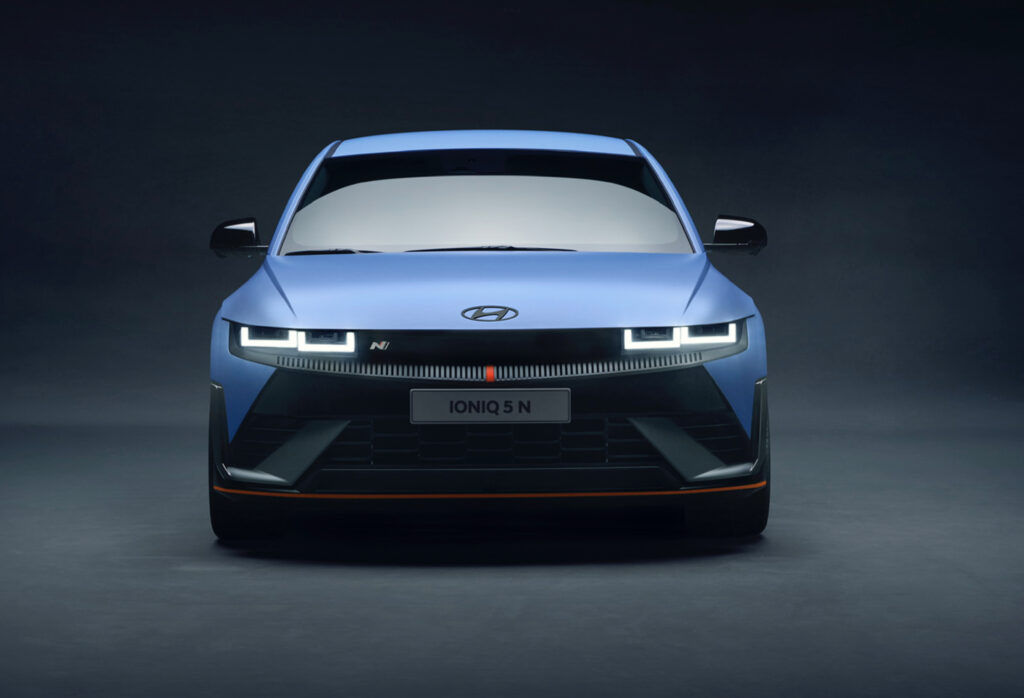
As well as the regular Eco, Normal and Sport drive modes, there are also track-focused modes that rely on the driver knowing a bit about what they’re trying to achieve.
Some of it involves getting the car ready for track attacks as part of the battery pre-conditioning system, which adjust the temperature of the battery pack ahead of high-speed attacks. Choose Drag and it readies the batteries for short bursts; choose Track and the temperature is adjusted for more laps.
There’s also Endurance and Sprint modes as part of the N buttons on the steering wheel. Each is designed to maximise track performance over long or short stints.
In whichever mode is chosen the regenerative braking system of the EV side of the vehicle plays a crucial role.
Hyundai has fitted sizeable 400mm four-piston front brake calipers and 360mm single-piston rears.

They’re assisted by regenerative braking from the electric motors that can provide up to 0.6G of the braking force. The regen is also designed to continue to some degree all the way into the activation of the ABS system.
“We believe regen will redefine braking performance in all high performance EVs in the future,” says Johnson.
Like all cars that utilise the E-GMP Hyundai Group architecture, the Ioniq 5 N can be charged at up to 230kW when utilising more potent 800V chargers (typically able to provide up to 350kW), allowing for a 10-80 percent charge in about 18 minutes.
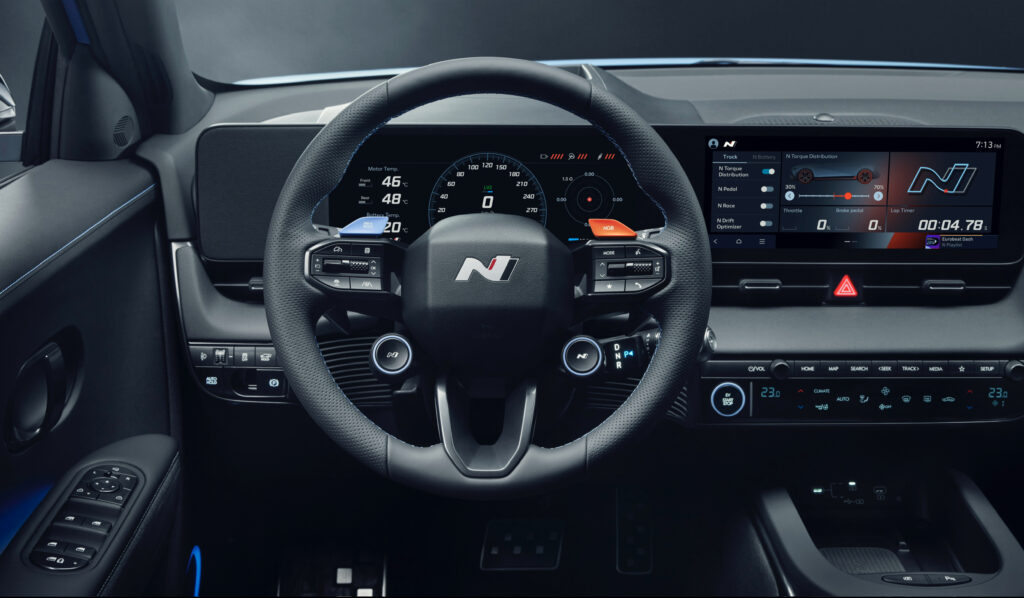
The Hyundai Ioniq 5 N is due in 2024.
Of course one big question is what it will cost.
Given the rival Kia EV6 sells from $99,590 before on-road costs the expectation is it’ll comfortably be north of that.

